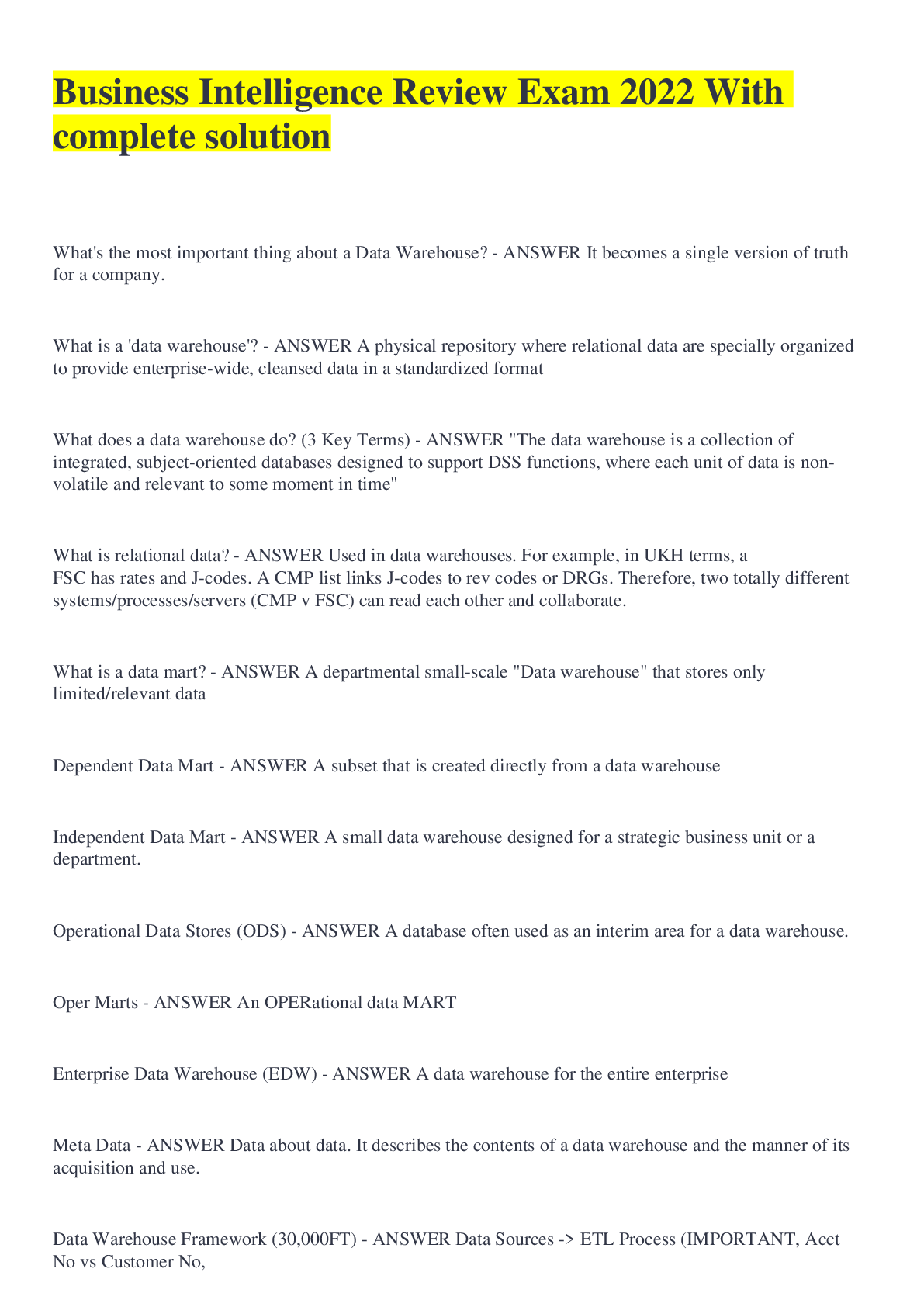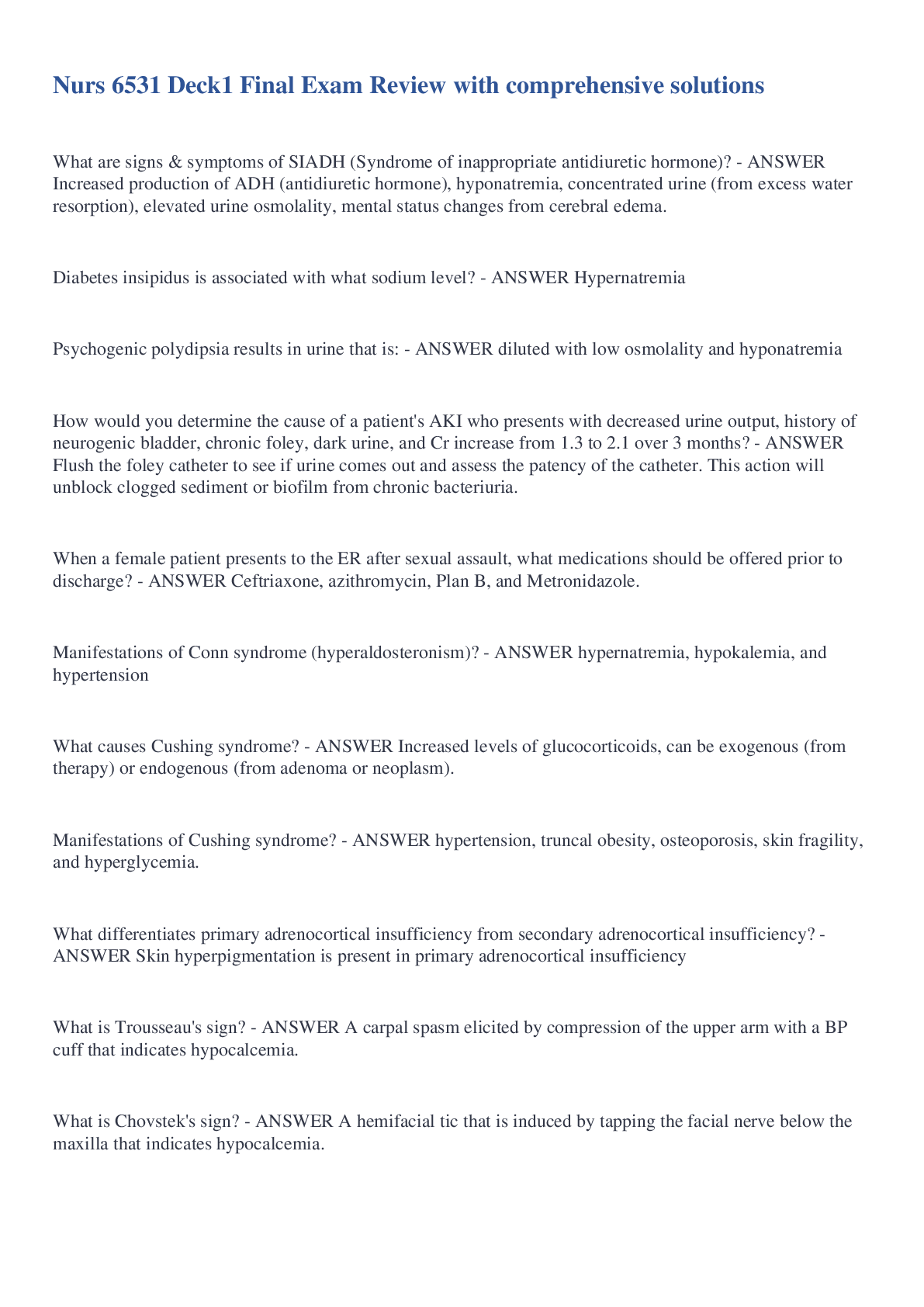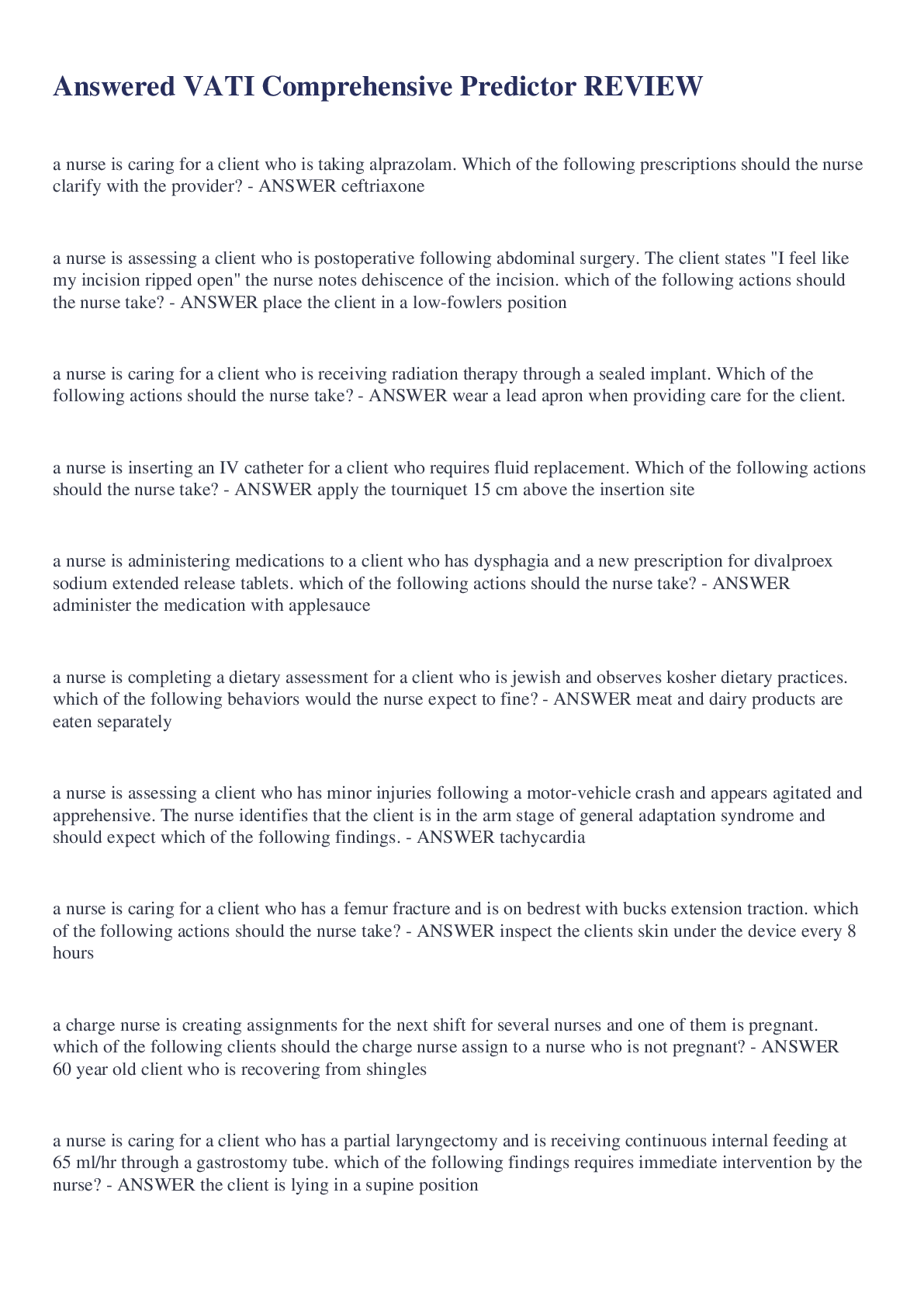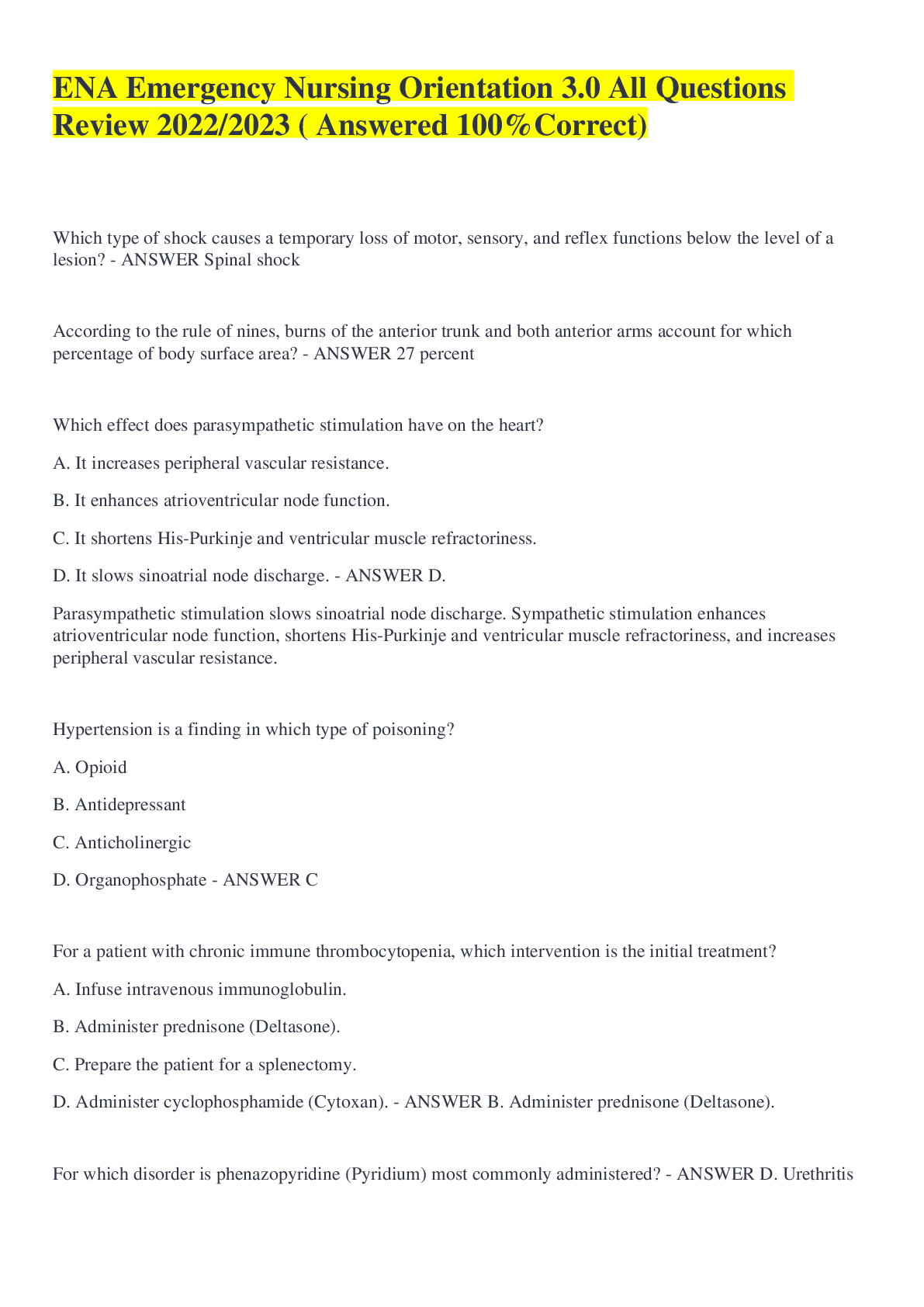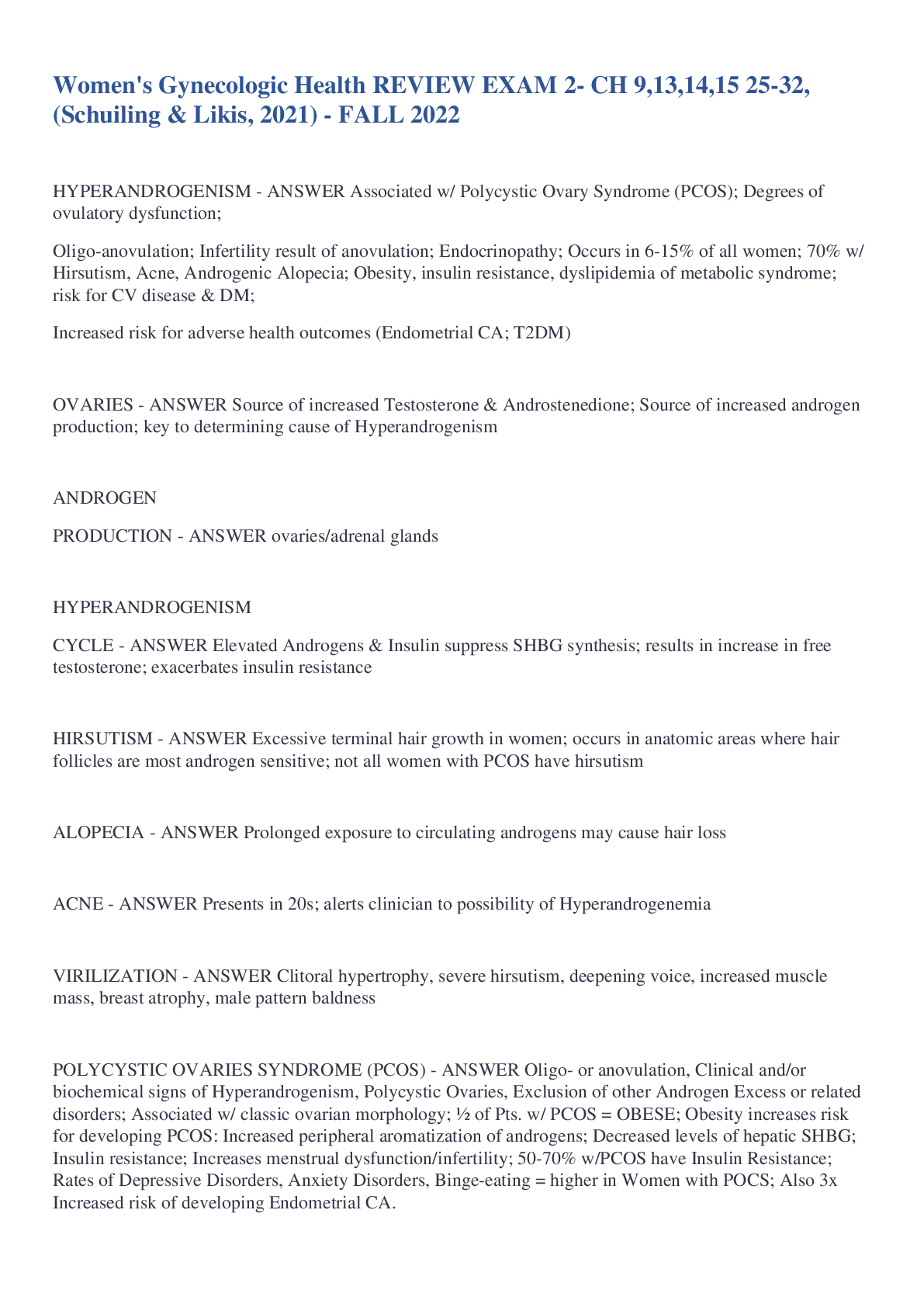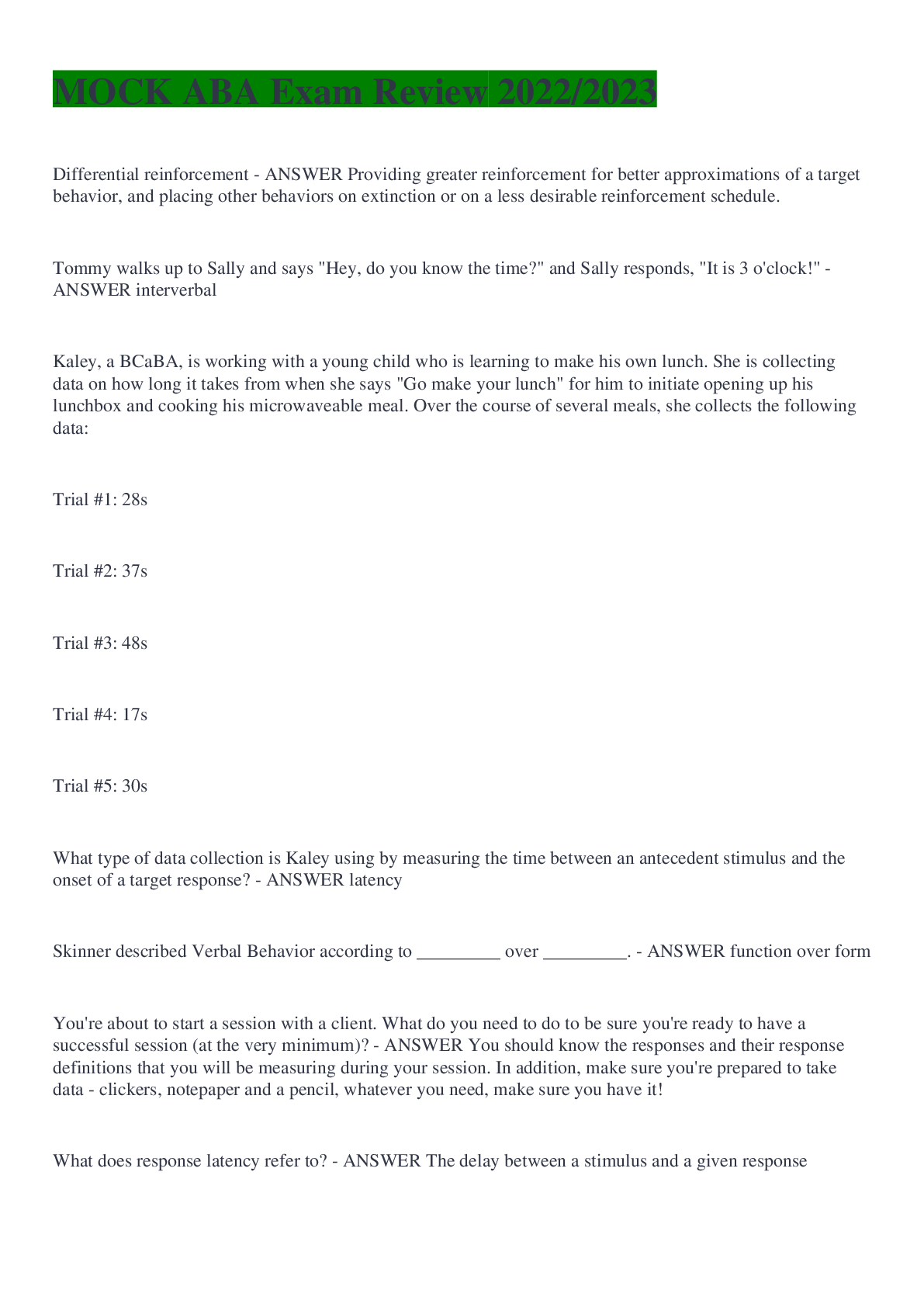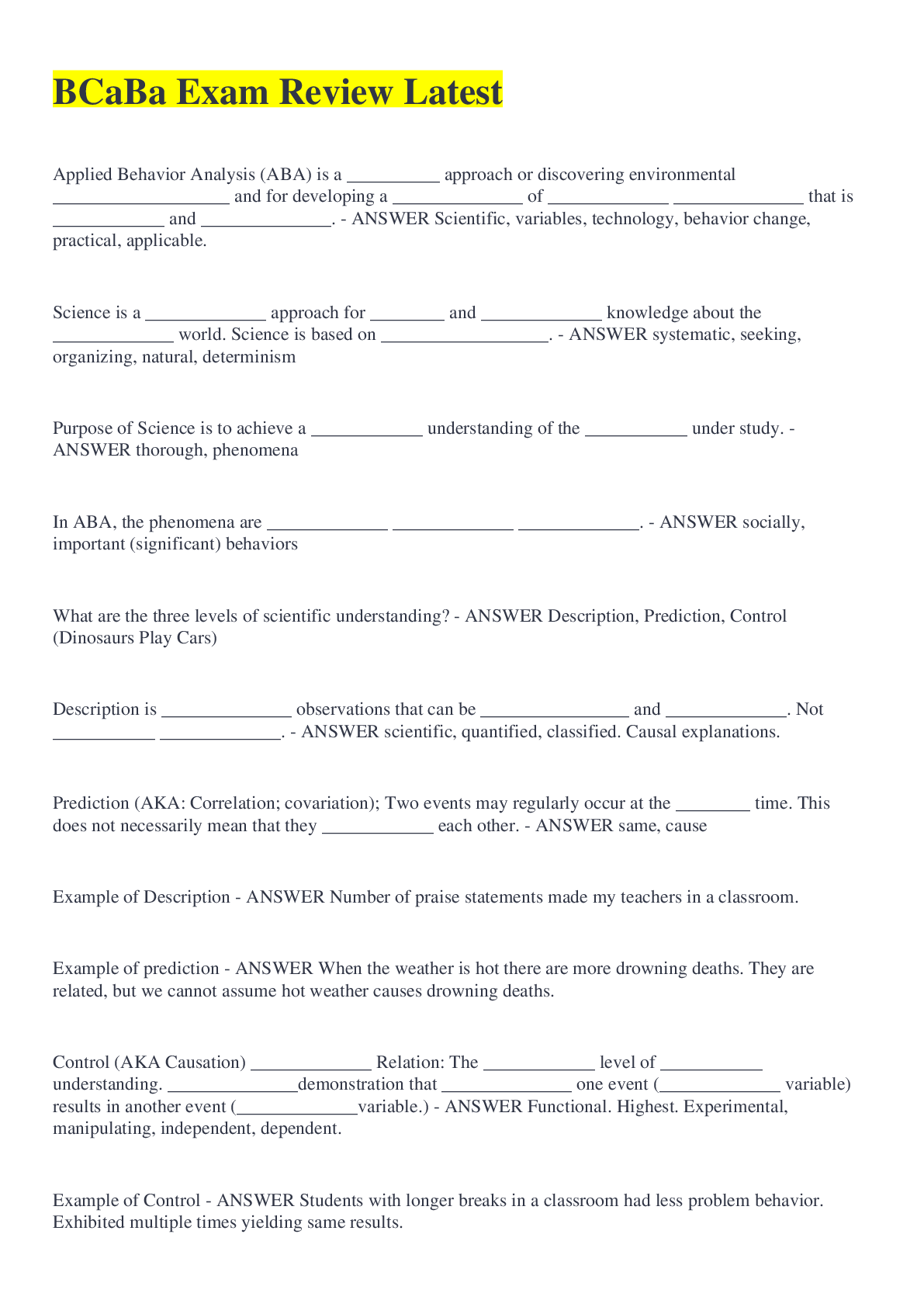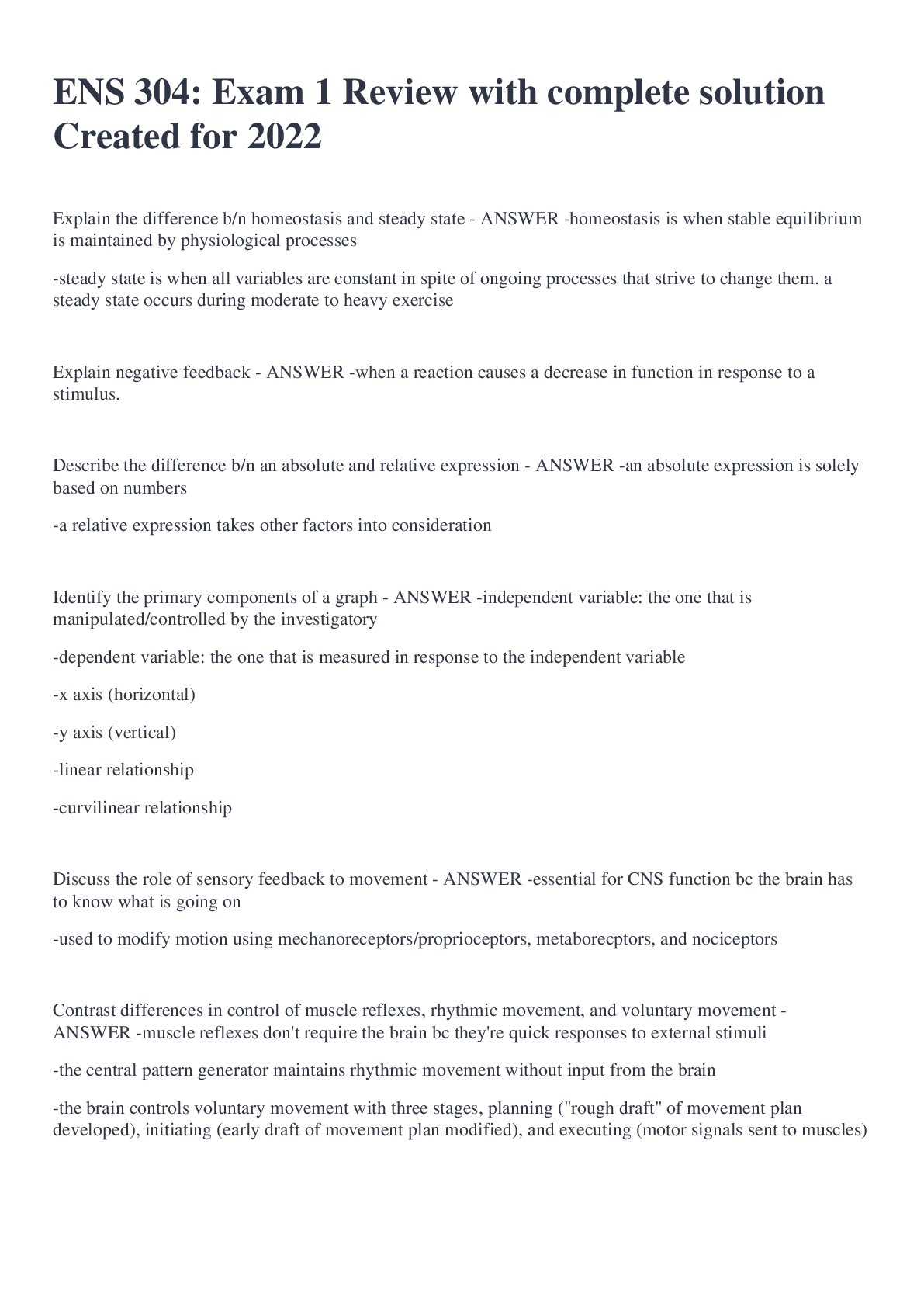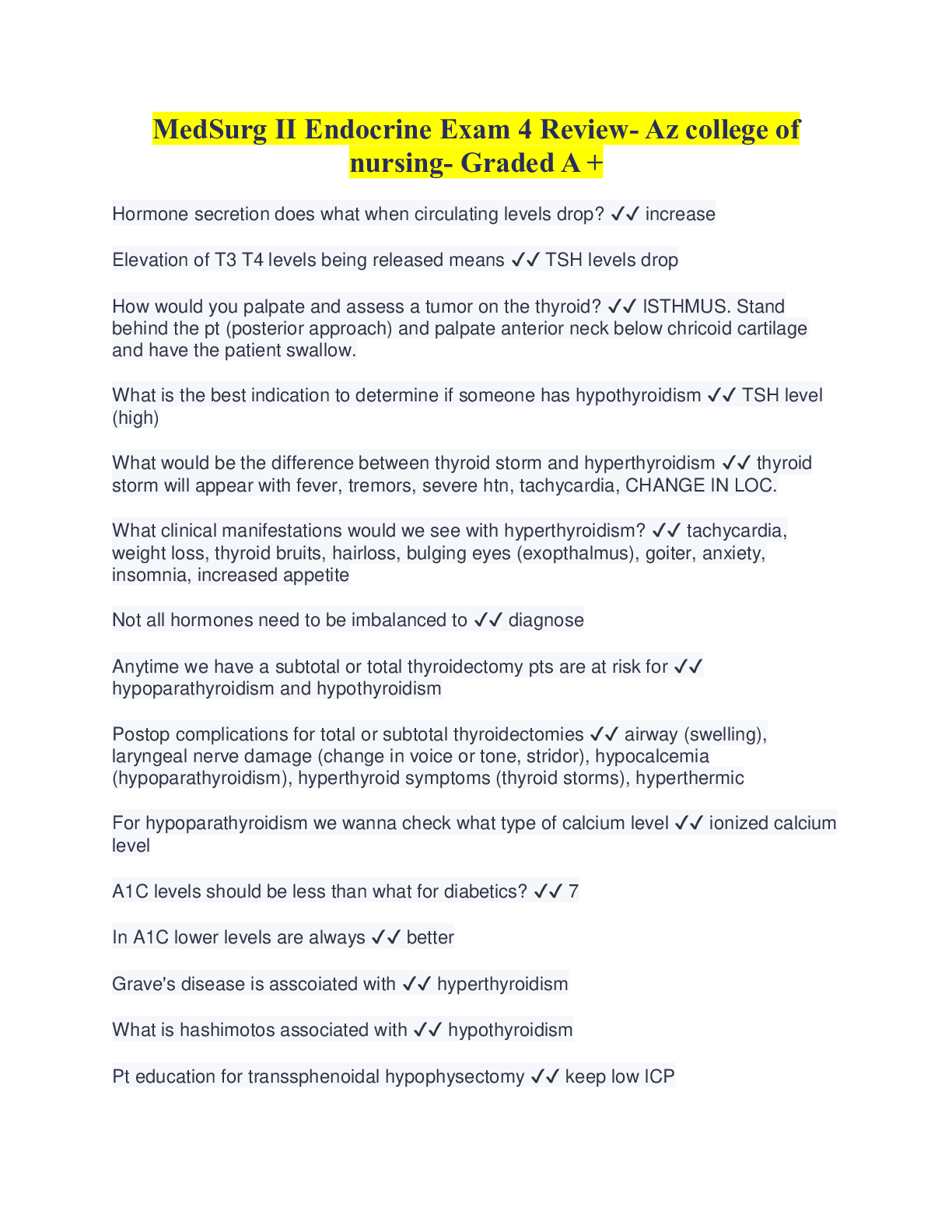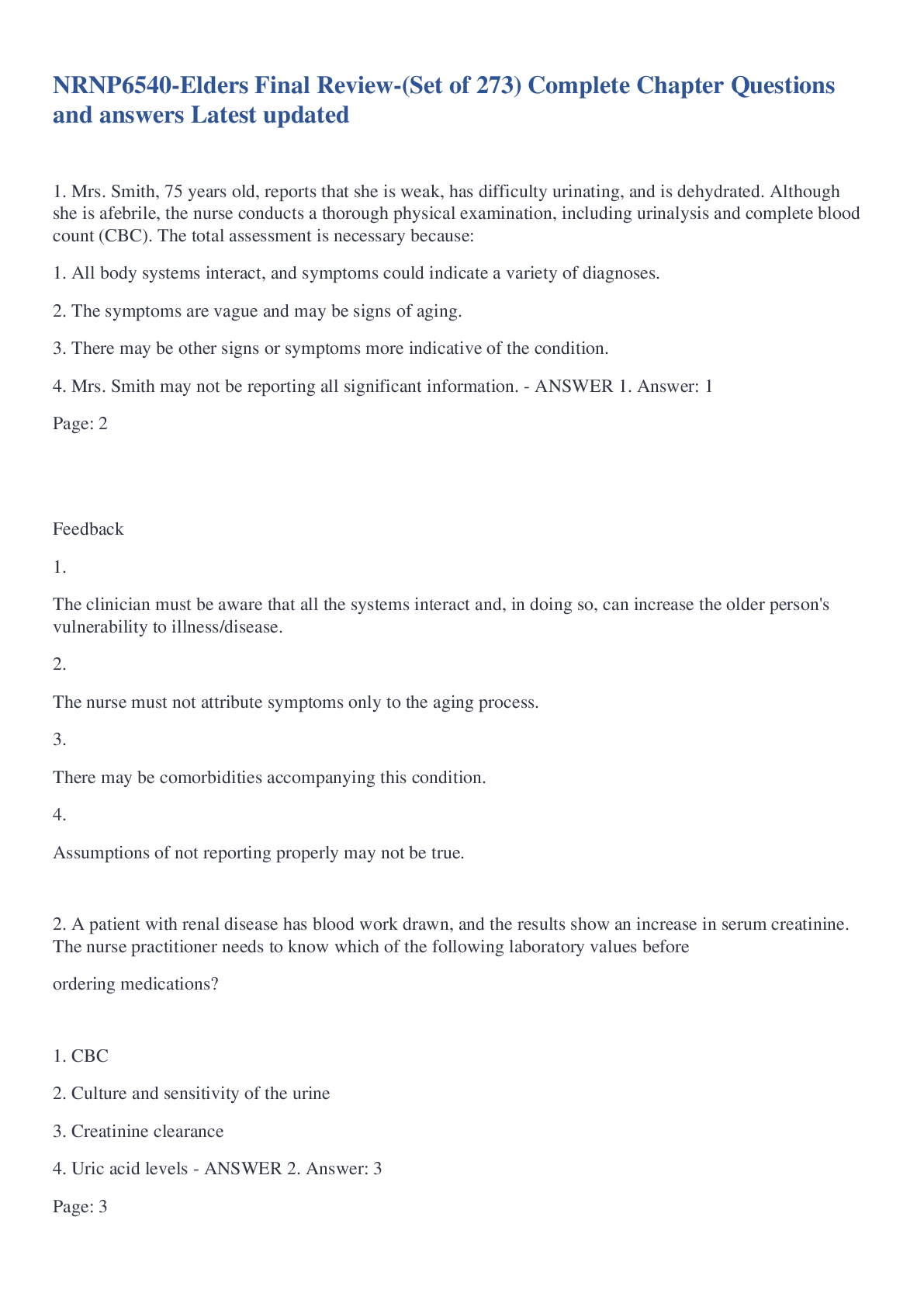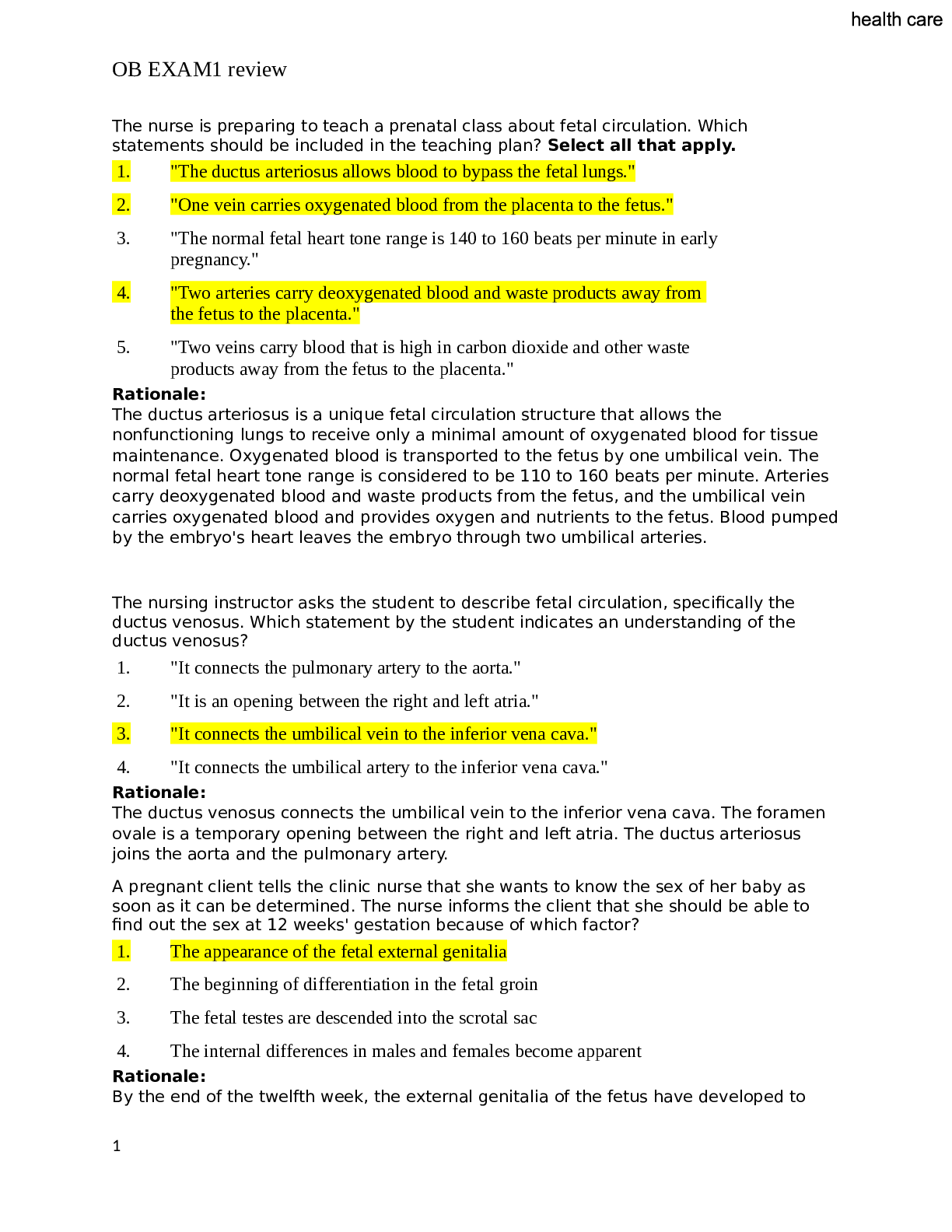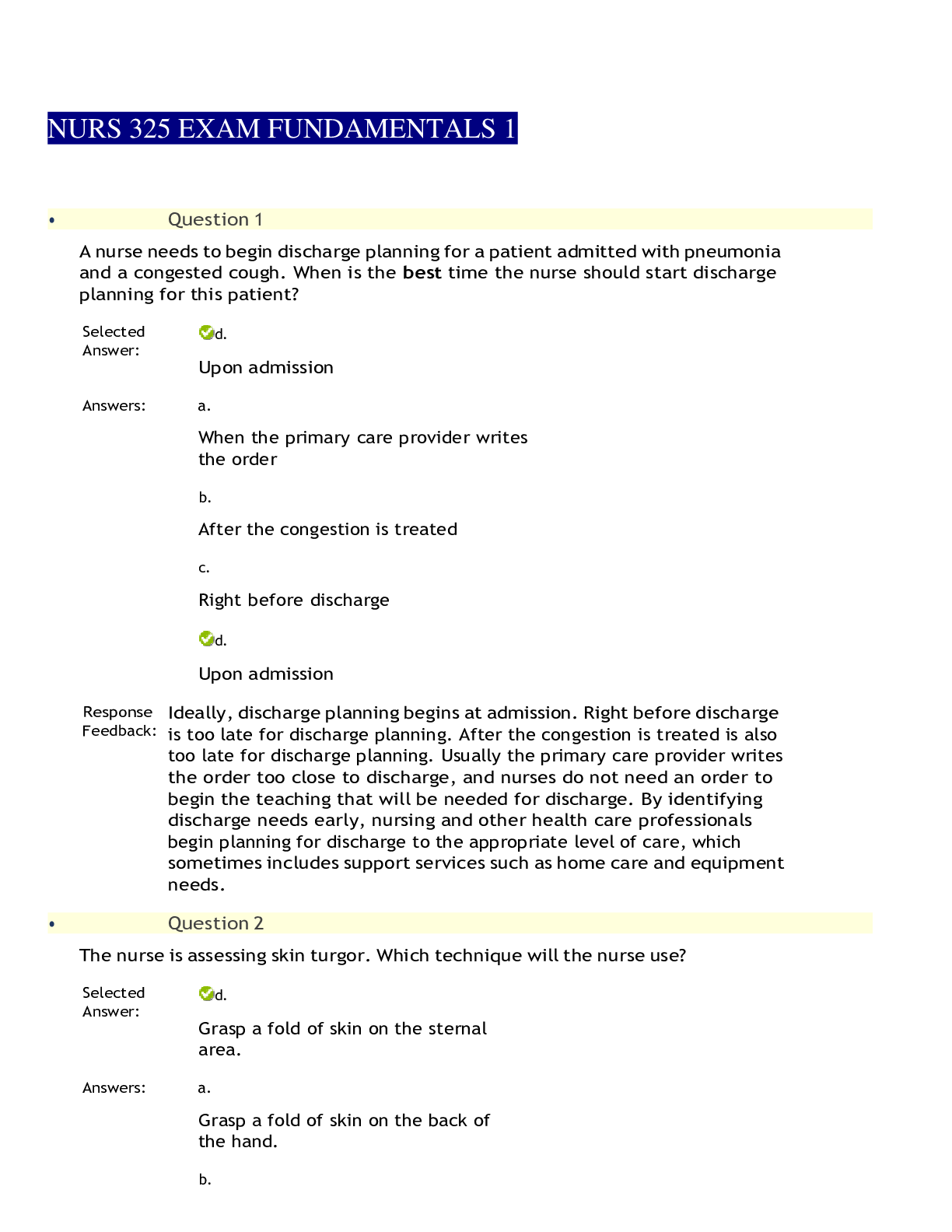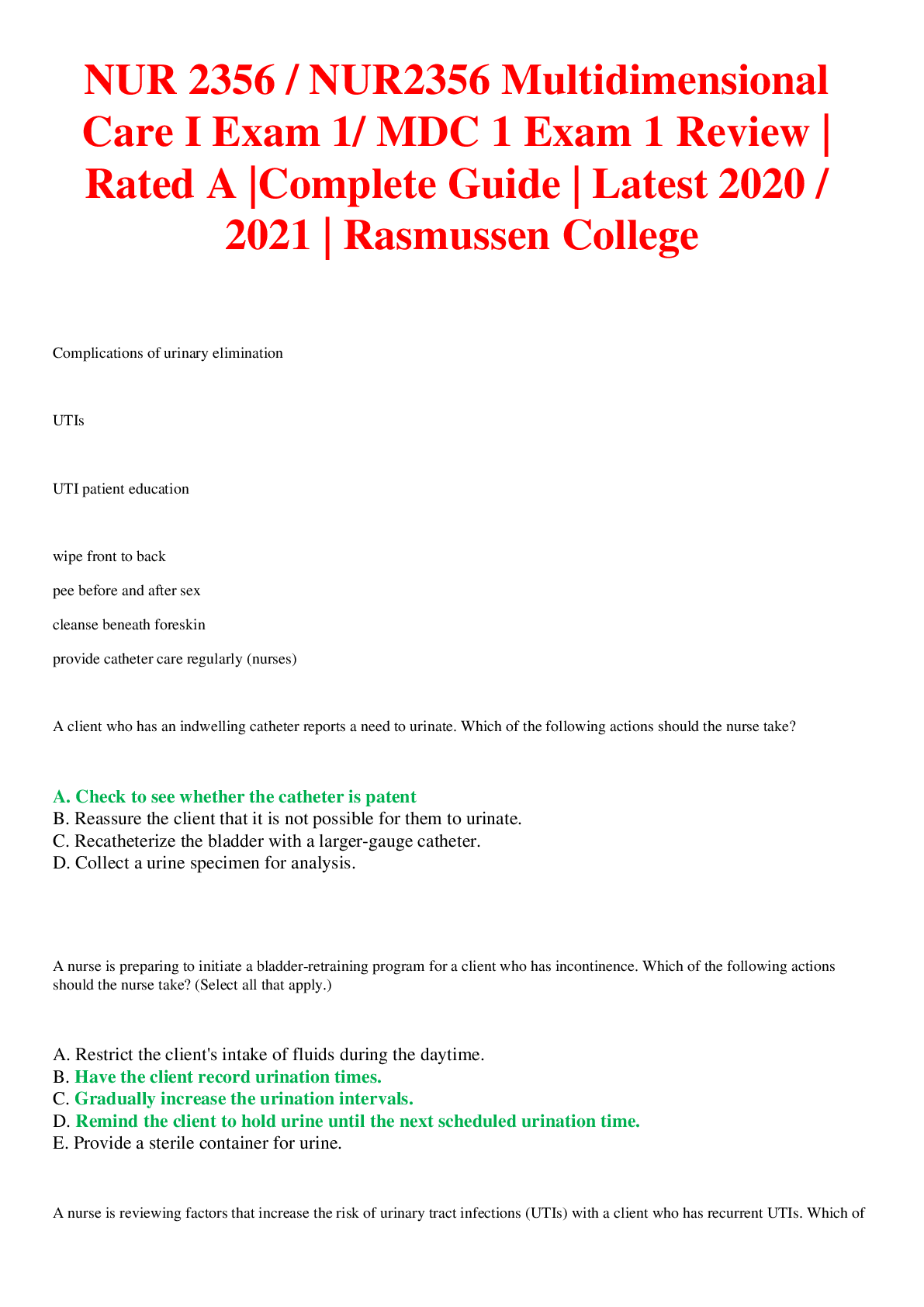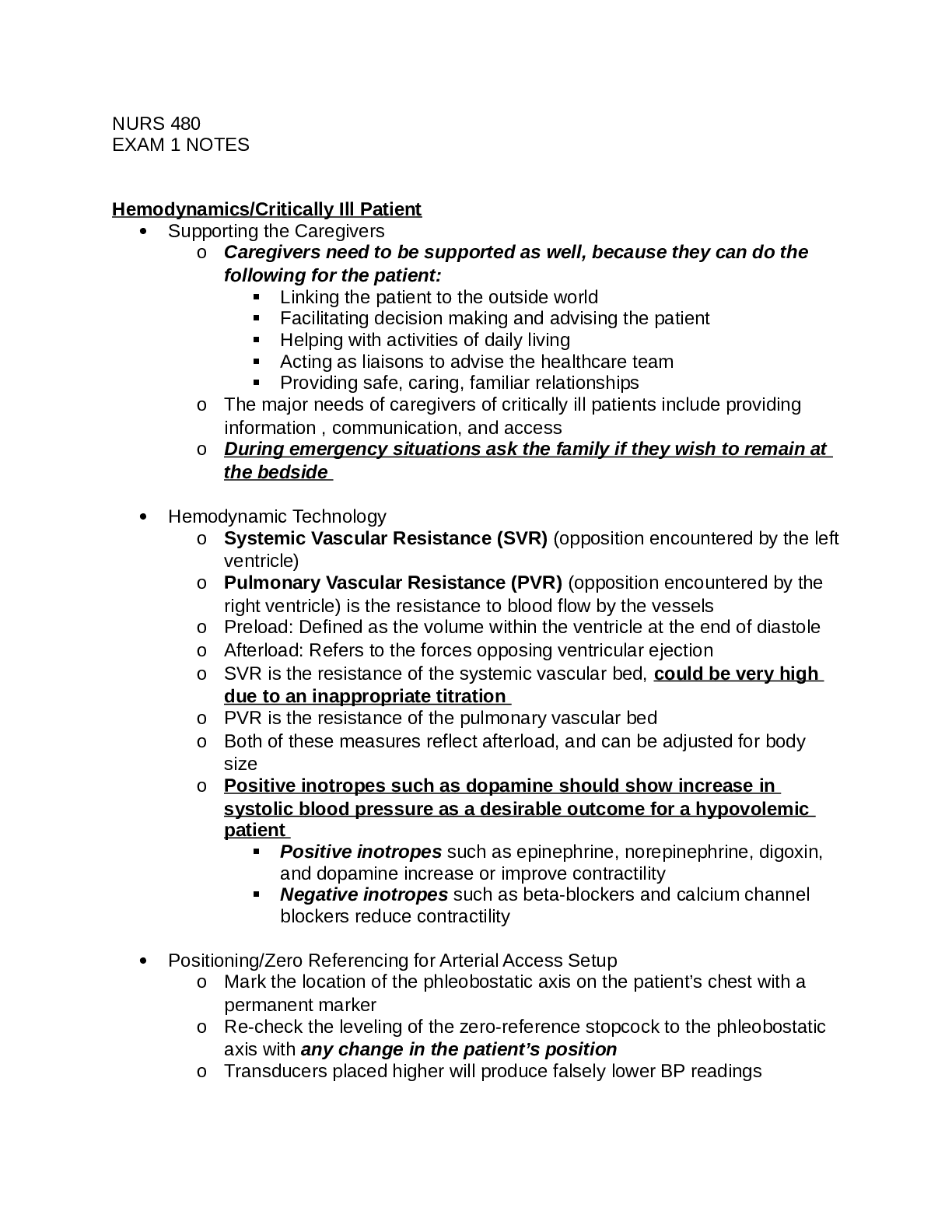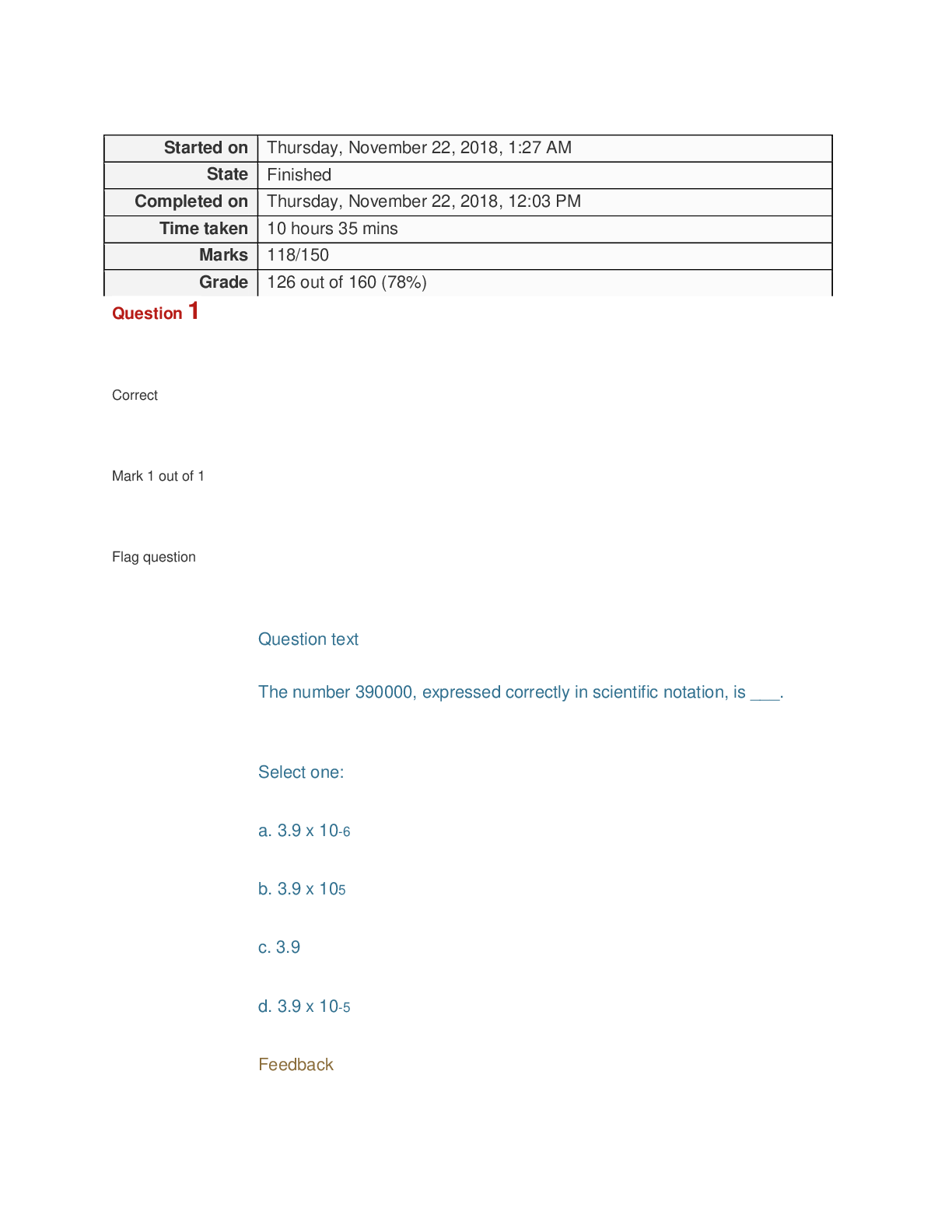Health Care > EXAM REVIEW > PMHNP I - Exam 1 - Review Book Questions Solved and verified Fall 2022/2023 (All)
PMHNP I - Exam 1 - Review Book Questions Solved and verified Fall 2022/2023
Document Content and Description Below
The purpose of the ANA's PMH Nsg: Scope and Standards of Practice is to: a. Define the role and actions for the NP b. Establish the legal authority for the prescription of psychotropic medications ... c. Define the legal statutes of the role of the PMHNP d. Define the differences between the physician role and the NP role - ANSWER a. Define the role and actions for the NP The trend in legal rulings on cases involving mental illness over the past 25 years has been to: A - Encourage juries to find defendants not guilty by reason of insanity B - Protect the individual's freedoms or rights when he or she is committed to a mental hospital C - Place increasing trust in mental health professionals to make good and ethical decisions D - Decrease the "red tape" associated with commitments so that commitments are faster and easier - ANSWER B. Identifies the trend of ensuring the protection of individual civil liberties for psychiatric clients. Mr Smithers, an involuntarily hospitalized patient experiencing psychotic symptoms, refuses to take any of his ordered medication because he believes "Jesus Christ told me I am the prophet and must fast for a year." Your actions should be based on your knowledge that: A - Psych clients cannot refuse treatment B - Psych clients don't always know what's good for them C - Psych clients can refuse treatment D - Psych clients cannot be trusted to make good healthcare decisions and, therefore, the nurse's best clinical judgment should guide actions - ANSWER C. As with any client, psych clients can refuse treatment unless a legal process resulting in a mandatory court order for treatment has been obtained. Which of the following statements best reflects the difference between the nurse-client (N-C) relationship and a social relationship? In the N-C relationship... A - the primary focus is on the client and his needs. B - goals are deliberately left vague and unspoken so that the client can work on any issue. C - the nurse is solely responsible for making the relationship work. D - there is no place for social interaction. - ANSWER A - the primary focus is on the client and his needs. Social relationships are mutual interpersonal relationships in which the needs of both parties are addressed. The N-C relationship is most concerned with meeting the needs of the client. In forming a therapeutic relationship with clients, the PMHNP must consider developing many characteristics that are known to be helpful in relationship-building. These characteristics include all of the following EXCEPT: A - genuineness B - acceptance C - authenticity D - accuracy in assessment - ANSWER D - accuracy in assessment Although an important aspect of the PMHNP role, accuracy in assessment does not in and of itself facilitate relationship building In forming a therapeutic relationship with clients, the PMHNP must consider developing many characteristics that are known to be helpful in relationship building. Which of the following is an essential part of building a therapeutic relationship? A. Collecting a family history B. Like-mindedness C. Authenticity D. Accuracy in Assessment - ANSWER C. Authenticity - Being genuine, honest, and respectful are essential elements in establishing a working relationship with any client. Like-mindedness is not a part of the therapeutic relationship. Although an important aspect of the PMHNP role, collecting a family history and accuracy in assessment does not in and of itself facilitate relationship-building. The DSM-IV provides for holistic client assessment by using a multiaxial assessment format. The general medical conditions experienced by a client that may influence treatment of his or her psychiatric disorders are coded on which of the five axes of the DSM? A - Axis I B - Axis II C - Axis III D - Axis IV - ANSWER C - Axis III Medical conditions are coded on Axis III According to the DSM-5, which of the following is true? A. A mental disorder is equivalent to the need for treatment. B. Diagnostic criteria are used to inform clinical judgment. C. Socially deviant behavior is considered a mental disorder. D. A culturally expected response to a stressor is not a mental disorder. - ANSWER D - All DSM-5 disorders need to be made taking a person's culture into account. A cultural expression of a response to grief, loss, or stress is not considered a DSM-5 dx. Mrs French has been in individual therapy for 3 months, and is clinically ready to terminate treatment. After discussing termination, she suddenly begins to demonstrate some of her original symptoms; is hesitant to discharge; and displays regressive defense mechanisms. The best explanation is: A - An exacerbation of her symptoms related to stress B - The normal cyclic nature of chronic mental health symptoms C - A sign of normal resistance to termination seen in the termination phase of therapy D - A sign of pathological attachment to the therapist that must be addressed - ANSWER C - A sign of normal resistance to termination seen in the termination phase of therapy Clients frequently display resistance and regression at the termination of a meaningful therapeutic process. The PMHNP is responsible for planning an effective termination and monitoring clients during the termination period. A client is displaying low self-esteem, poor self-control, self-doubt, and a high level of dependency. These behaviors indicate developmental failure of which of the following stages of development: A - Infancy B - Early childhood C - Late childhood D - School age - ANSWER B- Early Childhood Mr Thompson has been forgetful lately, for example forgetting where he has placed his keys or what time appointments are scheduled, and he stated that he thinks these are just random behaviors that have no particular meaning. Which Freudian-based psychodynamic principle assumes that all behavior and actions are purposeful? A - Pleasure principle B - Psychic determinism principle C - Reality principle D - Unconsciousness principle - ANSWER B - The psychic determinism principle states that all behavior has purpose and meaning, often unconscious in nature, and that no behaviors occur randomly or by coincidence. An example of a mature, healthy defense mechanism is A - Denial B - Rationalization C - Repression D - Suppression - ANSWER D - Suppression is the only defense mechanism listed in which the client channels conflicting energies into growth-promoting activities. Mr Johnson is a 54-year-old client you have been seeing for several weeks in therapy. While discussing his current concerns of marital stress, he lies on the floor and assumes the fetal position. This is most likely an example of A - Immature regressive defense mechanism B - Denial of reality C - Immature fantasy defense mechanism D - Repressive behavior - ANSWER A - Immature regressive defense mechanism is a return to a behavior common to an earlier stage of development. Defense mechanisms are best viewed a function of the ego A - To alert us to harm and danger B - To alert us to problems C - Used to resolve a conflict D - Used to protect the id - ANSWER C - Defense mechanisms are a function of the ego used to resolve a conflict. One of the health care changes that has occurred as a result of the ACA is that doctors/hospitals/clinic groups or health systems are coming together and assuming the responsibility for quality care to large groups of individuals insured by Medicare. The health care clinics/systems doctors or hospitals that join together are called which of the following? A. HMO B. PPO C. Accountable Care Organization (ACO) D. Individual Health Plan (IHP) - ANSWER C. - ACO's are groups of doctors or other HCPs who voluntarily come together and assume the care provided to Medicare patients. Health care economics is concerned with making decisions so the benefits outweigh the cost of resource utilization. What are two concepts that healthcare economics is concerned with in regard to fair distribution of resources and allocation? A. Equity and Efficiency B. Cost and Benefits C. Opportunity and Waste D. Affordable and Quality - ANSWER A. Health care efficiency is making risk and benefit decision about how care resources are allocated and equity is ensuring that there is a fair distribution of the resources. Serotonin is produced in which of the following locations: A. Locus ceruleus B. Nucleus Basalis C. Raphe Nuclei D. Substantia Nigra - ANSWER C. Raphe Nuclei Dopamine is produced in which of the following locations: A. Locus Ceruleus B. Nucleus Bassalis C. Raphe Nuclei D. Substantia Nigra - ANSWER D. Substantia Nigra A client presents with complaints of changes in appetite, feeling fatigued, problems with sleep-rest cycle, and changes in libido. What is the neuroanatomical area of the brain that is responsible for the normal regulation of these functions? A. Thalamus B. Hypothalamus C. Limbic System D. Hippocampus - ANSWER B. Hypothalamus - Appetite, sleep, and libido are regulated by the hypothalamus. In considering whether to order an MRI of the health for a client, which of the following would be a contraindication to this diagnostic test? A. Prosthetic Limb B. History of head trauma C. Pacemaker D. Pregnancy - ANSWER C. A client with a pacemaker should not receive an MRI of the head. The primary excitatory ntm is: a. GABA b. Serotonin c. Dopamine d. Glutamate - ANSWER D. Glutamate is the primary excitatory NTM A client is experiencing difficulties with working memory, planning and prioritizing, insight into his problems, and impulse control presents for assessment. In planning his care, the PMHNP should apply his or her knowledge that these symptoms represent problems with the a. Frontal Lobe b. Temporal Lobe c. Parietal Lob d. Occipital Lobe - ANSWER a. Frontal Lobe - Problems with working memory, planning and prioritizing, insight into problems, and impulse control indicate a problem in the frontal lobe. The concept of target symptom identification is best explained as A - Identification of the major clinical presentation of the client B - Identification of specific, precise, and individualized symptoms reasonably expected to improve with medication C - Identification of the secondary messenger system syndrome D - Intentional modulation of synaptic pathways - ANSWER B. Target symptom identification is the identification of specific, precise, and individualized symptoms reasonably expected to improve with a given medication. [Show More]
Last updated: 1 year ago
Preview 1 out of 11 pages
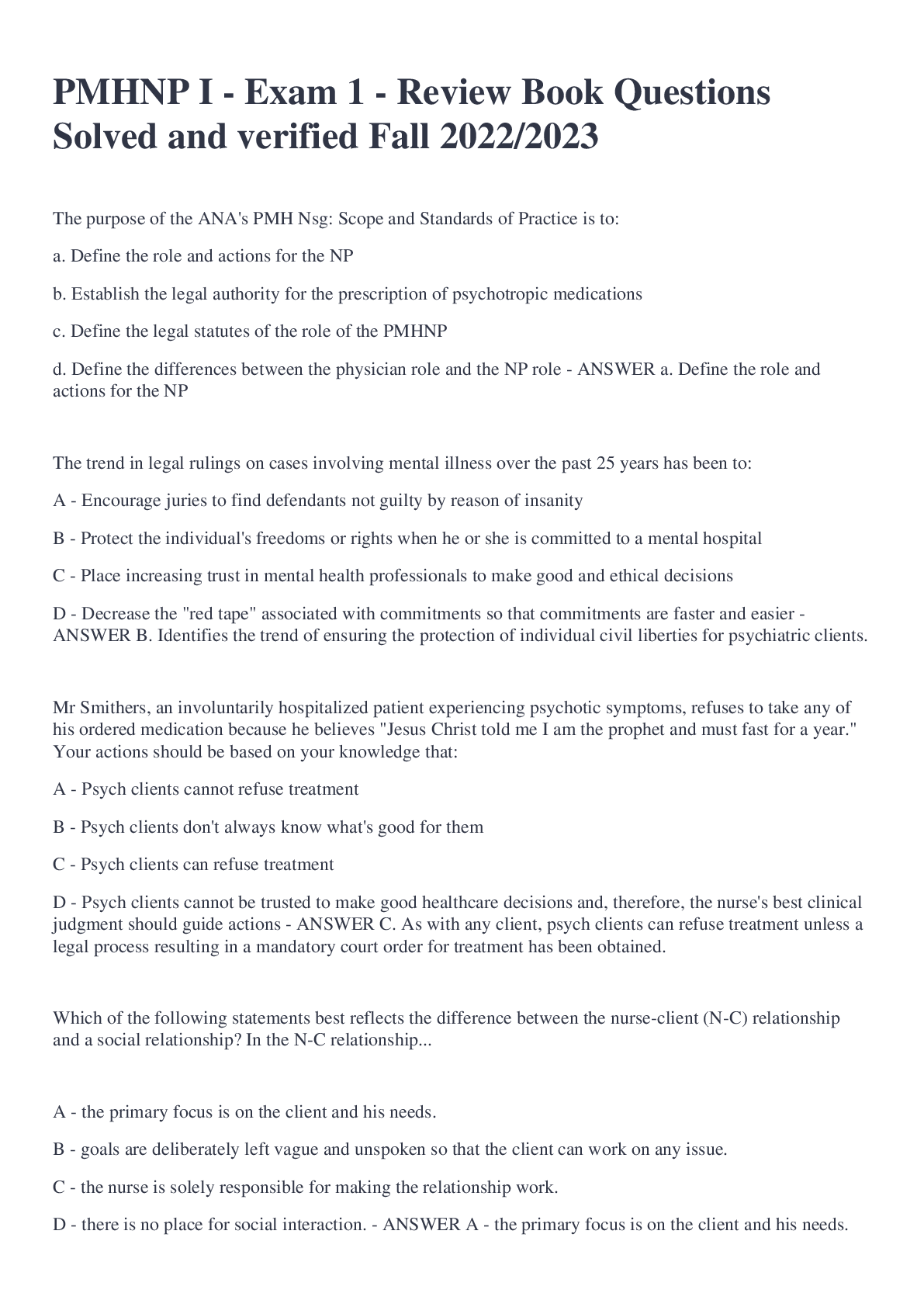
Reviews( 0 )
Document information
Connected school, study & course
About the document
Uploaded On
Oct 02, 2022
Number of pages
11
Written in
Additional information
This document has been written for:
Uploaded
Oct 02, 2022
Downloads
0
Views
44

